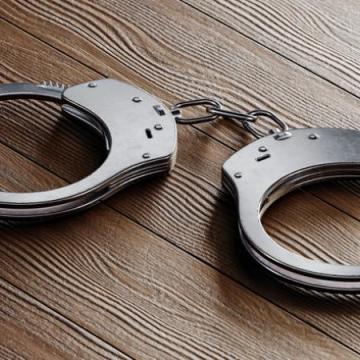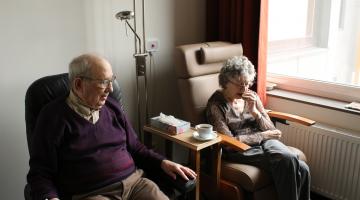If you are a landlord you will have legal obligations and duties with regard to fire safety and the protection of your properties and the people who live in them. It is important that you apprise yourself of these duties and obligations and ensure complete compliance with the legislation and regulations as ignorance of the law is not a defence.
The three main pieces of legislation which cover this area of law are:
• The Housing Act 2004
• The Smoke and Carbon Monoxide Alarm (England) Regulations 2015
• The Regulatory Reform (Fire Safety) Order (2005) (The Order)
The Regulatory Reform (Fire Safety) Order (2005) (The Order) stipulates that owners, managers, agents are likely to be deemed to be the 'Responsible Persons' for the purposes of The Order. What it means is that any person who has some level of control over your property must take reasonable steps to reduce the risk from fire to an acceptable level and ensure people can safely escape if there is a fire. As a landlord, it is likely that for the purposes of The Order you will be The Responsible Person.
As the Responsible Person it will be incumbent upon you to:
1. Ensure you obtain a Fire Risk Assessment of each property you rent out.
The objective of the Fire Risk Assessment is to identify and evaluate all fire risks to which 'relevant people' are exposed and eliminate or reduce those risks and to ensure that in the event of a fire, people can safely escape. This can be achieved by carrying out a fire risk assessment.
Relevant people are those persons who are legally allowed on the premises, e.g. staff, visitors, residents and contractors etc.
If you are the responsible person, you must make sure you carry out a fire risk assessment. This task can be carried out by a fire safety professional. However, you will still be responsible, in law, for meeting the order.
As a landlord, if you own or manage a block of flats you will be required by legislation to carry out a fire risk assessment of all the common areas of your properties.
If you own or manage Houses in Multiple Occupancy (HMO'S) you are also required to carry out a fire risk assessment of the property.
The Fire Risk Assessment must:
• Identify fire hazards
• Identify people at risk
• Evaluate, remove or reduce, and protect from risk
• Record, plan, inform, instruct and train
• Review.
2. Ensure the Fire Risk Assessment is reviewed.
Any such assessments must be reviewed by the responsible person regularly so as to keep it up to date particularly if there is reason to suspect it is no longer valid or there has been a significant change in the matters to which it relates, including when the premises, special, technical and organisational measures, or organisation of the work undergo significant changes, extensions or conversions. Where changes to an assessment are required as a result of any such review, the responsible person must make them as soon as practicable after the assessment is made or reviewed. The responsible person must record the significant findings of the assessment, including the measures which have been or will be taken by the responsible person and any group of persons identified by the assessment as being especially at risk.
Good practise and best advice is to review each fire risk assessment annually.
3. Provide Information: Keeping Tenants and Visitors informed.
Signage is extremely important. In the event of a fire, all relevant persons need to know what action needs to be taken and where their nearest fire assembly point is located. Clear fire action signs in the relevant language need to be visibly located. You may wish to consider the following too:
• Alerting each resident to fire safety measures
• Placing fire action signs on the inside of each tenant's front door
• Holding regular fire safety meetings.
4. Provide fire fighting and fire detection equipment.
Where necessary the responsible person must:
• Ensure that the premises are equipped with appropriate fire fighting equipment and with fire detectors.
• Record, repair and maintain fire safety equipment and any issues within the premises
• Ensure alarms and any non-automatic fire-fighting equipment is easily accessible, simple to use and indicated by signs.
• Take measures for fire fighting in the premises and nominate responsible persons to implement those measures.
• Ensure that the number of such persons, their equipment and their training available to them are adequate, taking into account the size of, and the specific hazards involved in the premises
• Arrange any necessary contacts with external emergency services, particularly as regards fire-fighting, rescue work and first aid and emergency medical care.
5. Keep all emergency exits clear.
All escape routes must be kept clear at all times and any blockages removed immediately.
Nothing should be allowed to obstruct escape routes.
It is worth giving mention here to mobility scooters as these are often stored or left to charge in areas such as corridors or near staircases. They can form an obstruction to escape routes and access when needed. Numerous serious fires around the country have involved mobility scooters.
Landlords who own/manage blocks of flats
Aside from your legislative obligations and duties as mentioned above, you may wish to consider the following:
• Fitting smoke detectors to all properties
• Ensuring that all outside doors can be easily opened at all times from the inside
• Introducing a non-smoking policy in the property
• Carry out regular electrical installation safety checks
• Ensuring all escape routes are kept clear at all times
• Ensure fire doors are fitted
• Employ a fire safety professional to carry out all relevant checks and fire risk assessments and reviews.
Private Sector Landlords
From 1st October 2015, private sector landlords will be required to have:
• At least one smoke alarm installed in every storey of their properties
• A carbon monoxide alarm in any room containing a solid fuel burning appliance (e.g. wood burning stove, a coal fire).
• The landlord must ensure that the alarms are in working order at the start of each new tenancy. Also;
• Gas appliances must be checked by a registered Gas Safe engineer annually
• Electrical appliances must carry the British Safety Standard sign
• Any furnishings you provide in your property must be fire resistant and meet safety regulations
• You must produce safety certificates to your residents, so they can see that gas and electrical appliances have been checked.
• Under the Housing Act 2004, as a landlord, you are required to ensure there are adequate escape routes in the property.
Houses in multiple occupation (HMO)
A house in multiple occupation (HMO) is defined as a dwelling that is occupied by two or more persons not living as a single household but sharing certain facilities such as WCs, bathrooms and kitchens. Tenancy agreements, use of communal areas, relationship between residents, locks on bedroom doors etc will be used to determine whether a group of residents forms a single household or an HMO.
In addition to the legislative obligations and duties detailed above, the HMO Regulations place duties on the manager of an HMO to keep fabric, fixtures and fittings in good order, ensure that occupiers are protected from injury and supply and maintain gas, electricity and other services.
It should also be noted that The Housing Act 2004 empowers Councils to take action where a range of housing hazards, including the risk of fire, occur. The Council can take control of an HMO if the health, safety and well-being of occupiers or people living in the locality are threatened.





